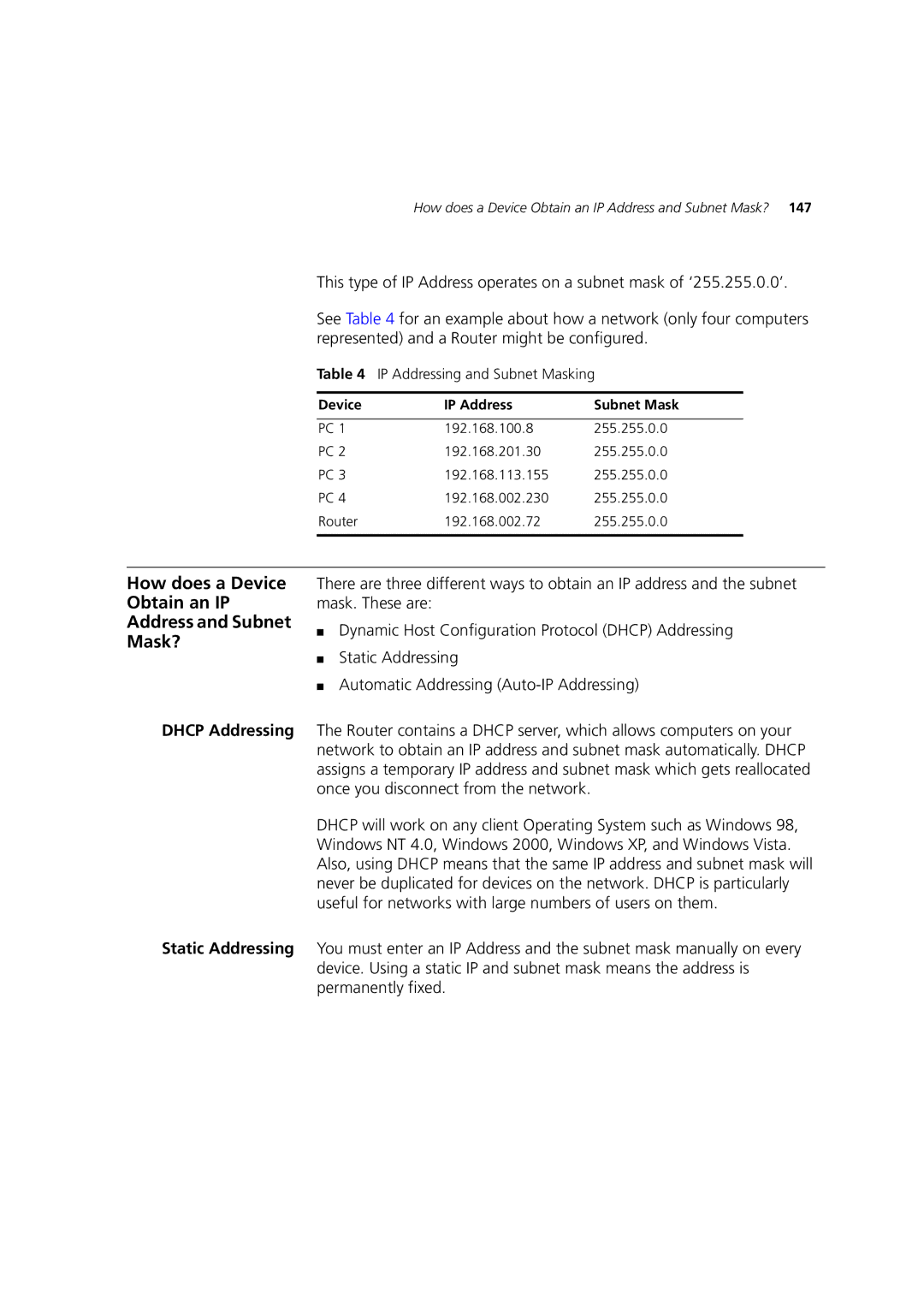
How does a Device Obtain an IP Address and Subnet Mask? 147
This type of IP Address operates on a subnet mask of ‘255.255.0.0’.
See Table 4 for an example about how a network (only four computers represented) and a Router might be configured.
Table 4 IP Addressing and Subnet Masking
Device | IP Address | Subnet Mask |
|
|
|
PC 1 | 192.168.100.8 | 255.255.0.0 |
PC 2 | 192.168.201.30 | 255.255.0.0 |
PC 3 | 192.168.113.155 | 255.255.0.0 |
PC 4 | 192.168.002.230 | 255.255.0.0 |
Router | 192.168.002.72 | 255.255.0.0 |
|
|
|
How does a Device Obtain an IP Address and Subnet Mask?
There are three different ways to obtain an IP address and the subnet mask. These are:
■Dynamic Host Configuration Protocol (DHCP) Addressing
■Static Addressing
■Automatic Addressing
DHCP Addressing The Router contains a DHCP server, which allows computers on your network to obtain an IP address and subnet mask automatically. DHCP assigns a temporary IP address and subnet mask which gets reallocated once you disconnect from the network.
DHCP will work on any client Operating System such as Windows 98, Windows NT 4.0, Windows 2000, Windows XP, and Windows Vista. Also, using DHCP means that the same IP address and subnet mask will never be duplicated for devices on the network. DHCP is particularly useful for networks with large numbers of users on them.
Static Addressing You must enter an IP Address and the subnet mask manually on every device. Using a static IP and subnet mask means the address is permanently fixed.
